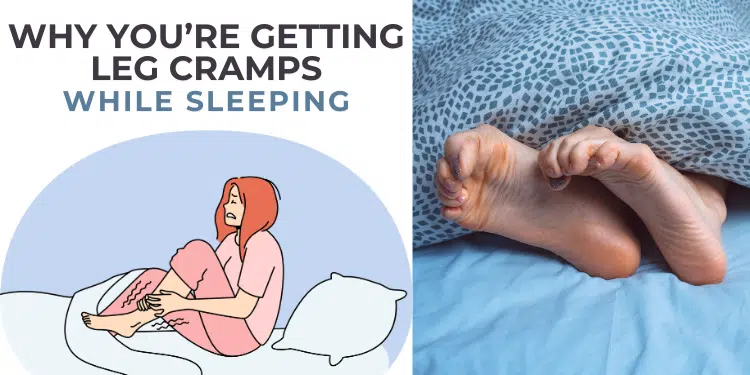Waking up in the middle of the night with a sudden, intense leg cramp can be an agonizing experience.
These involuntary muscle contractions, commonly referred to as nocturnal leg cramps, can disrupt your sleep and leave you dreading bedtime.
But what causes these painful episodes, and more importantly, how can you prevent them? Here’s everything you need to know.
What Causes Leg Cramps While Sleeping?
Leg cramps are caused by the sudden tightening of muscles, usually in the calves, thighs, or feet.
While the exact cause is not always clear, several factors are known to contribute to nighttime cramps:
- Dehydration
Not drinking enough water can cause muscle contractions and increase the likelihood of cramps. - Electrolyte Imbalance
Low levels of potassium, magnesium, or calcium can interfere with proper muscle function, leading to cramping. - Overuse or Muscle Fatigue
Intense exercise or standing for long periods during the day can strain muscles, making them prone to spasms at night. - Prolonged Inactivity
Sitting for extended periods can reduce blood flow to the muscles, increasing the risk of cramping. - Poor Circulation
Circulatory problems, such as varicose veins or peripheral artery disease, can lead to inadequate oxygen supply to muscles, triggering cramps. - Medication Side Effects
Certain medications, including diuretics, statins, and beta-blockers, can contribute to muscle cramping. - Medical Conditions
Underlying conditions such as diabetes, kidney disease, or hypothyroidism can make you more susceptible to leg cramps.
The Secret to Stopping Nighttime Leg Cramps
Preventing and alleviating leg cramps involves addressing the root causes and adopting healthy habits. Here are practical steps to keep leg cramps at bay:
1. Stay Hydrated
Proper hydration helps maintain muscle function and prevents dehydration-related cramps.
- Tip: Aim for 8-10 glasses of water daily, and adjust based on your activity level or climate.
2. Balance Your Electrolytes
Ensure your diet includes potassium, magnesium, and calcium-rich foods.
- Best Foods: Bananas, leafy greens, nuts, seeds, dairy products, and oranges.
- Consider supplements if your diet is lacking, but consult a doctor first.
3. Stretch Before Bed
Gentle stretches help relax muscles and improve blood flow.
- Try This Stretch: Stand facing a wall, place your hands on it, and step back with one leg, keeping it straight while bending the front knee. Hold for 20 seconds and switch legs.
4. Massage Your Muscles
A light massage can loosen tight muscles and promote circulation.
- Tip: Use essential oils like peppermint or lavender for added relaxation.
5. Adjust Your Sleeping Position
Poor posture while sleeping can put undue pressure on your muscles.
- Solution: Use a pillow to prop your feet slightly or try sleeping on your back.
6. Wear Comfortable Shoes
Ill-fitting shoes can strain your leg muscles during the day.
- Tip: Opt for supportive footwear, especially if you stand or walk a lot.
7. Heat or Ice Therapy
Apply a heating pad before bed to relax muscles or ice to reduce inflammation.
- Alternative: Take a warm bath with Epsom salts before sleeping.
What to Do During a Cramp
If you experience a cramp, act quickly to relieve the pain:
- Stretch the Muscle: Straighten your leg and flex your foot upward toward your knee.
- Massage the Area: Gently rub the muscle to encourage blood flow.
- Apply Heat: Use a heating pad or warm towel to relax the cramping muscle.
- Walk It Out: Stand up and take a few steps to ease the tension.
When to See a Doctor
Occasional leg cramps are normal, but if they become frequent or severe, it may signal an underlying condition. Consult a doctor if:
- Cramps occur more than three times a week.
- They are accompanied by swelling, redness, or muscle weakness.
- You have a medical condition like diabetes or vascular disease.
Nighttime leg cramps can be painful and disruptive, but they don’t have to control your life.
By staying hydrated, eating a balanced diet, stretching regularly, and maintaining healthy habits, you can reduce the frequency and intensity of these episodes.
Take proactive steps today and enjoy a more restful, cramp-free sleep!

